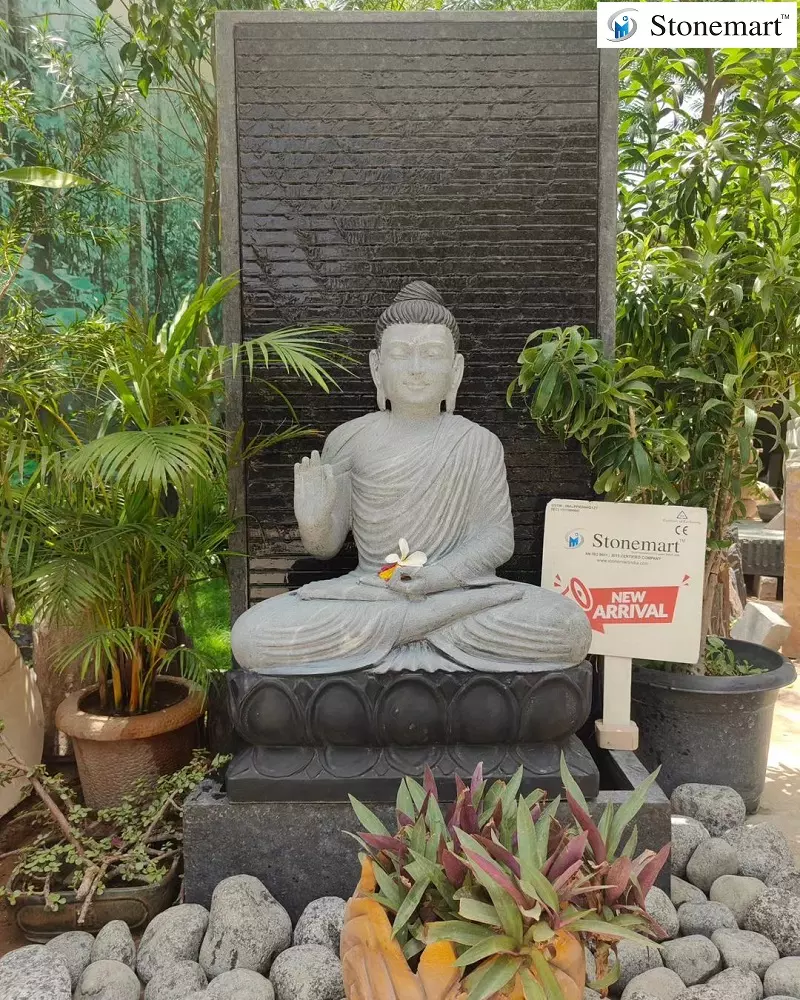What is the Difference Between an Abhaya Mudra and a Vitarka Mudra Buddha Statue?

The Buddha is a beacon to an ocean of blessings. These blessings can be interpreted via different mudras of the Buddha. Some mudras bless the bearer with knowledge, wisdom and clarity of thought, while the others bestow the bearer with confidence, courage and fearlessness.
Among the most popular mudras of Buddha, abhaya mudra Buddha and vitarka mudra Buddha are known to bless the bearer with the patronage against fear and refuge from ignorance respectively.
Despite various similarities, there are vast number of differences between the Buddha statues in these two mudras. Here, we will try to throw some light over some of the major differences so that you can decide upon whether which Buddha statue would ideally suit your personal requirements and conclude your shopping from the most trustworthy brand online.

MUST READ: What is the Difference Between a Dhyana Mudra and a Vitarka Mudra Buddha Statue?
So, allow us to bifurcate these differences through the table provided below -
| Criterion | Abhaya Mudra Buddha Statue | Vitarka Mudra Buddha Statue |
|---|---|---|
| Origin | It is the fifth dhyani Buddha named Amoghasiddhi. With the help of this mudra, the Buddha overcame jealousy and fear after his cousin Devdatta appointed a mad elephant named Nalagiri to kill him. This blessing and fearless mudra of the Buddha assuaged the rage nature of the elephant by granting him his refuge. | It is the mudra portrayed by the Buddha in reference to the perpetual flow and exchange of information. He portrayed this gyan mudra amid a debate and discussion that he had with his disciples at Sarnath. Due to the connection of this Buddha with knowledge and wisdom, it is also known as knowledge Buddha and teaching Buddha. |
| Appearance | Used as both sitting Buddha statue and standing Buddha statue with the palm of the right hand kept extended as blessing mudra. Here, all the fingers of the right hand are kept outstretched with the palm slightly cupped and facing the viewer. | This stone Buddha statue appears unique with his right hand kept upright and closer to the heart. The index finger and the thumb of the right hand are joined together to create a perpetual circle of energy, wisdom and knowledge. All the remaining three fingers of the right hand stay extended and upright. |
| Vastu and Feng-Shui Effects | The right hand protects the bearer from evil spirits, misfortune and negative energies. | The mudra represents the transmission of the wisdom of the Buddha by the means of his teachings. |
| Placement | This blessing Buddha statue can be placed at the entrance facing East. It helps make the person confident and fearless to face all kinds of uncertainties in life. | This Buddha imparts knowledge and helps developing a sense of reality. The Buddha sculpture should be placed in libraries, debate halls, auditoriums, research centers, educations institutions, office premises, etc. |
MUST READ: What is the Difference Between a Dhyana Mudra and a Bhumisparsha Mudra Buddha Statue?

Once you get familiar with the distinction between an abhaya mudra Buddha and a vitarka mudra Buddha, you can find yourself in a situation to make the right decision. Always purchase natural stone Buddha idols only as they do not feature any type of impurity. You can place a Buddha statue indoor and outdoor as per Vastu or Feng shui, including the white marble Buddha statues, black marble Buddha statues, sandstone Buddha statues and Buddha fountains.
Always order 2 feet Buddha statue, 3 feet Buddha statue, 4 feet Buddha statue, 5 feet Buddha statue, and above from Stonemart™ India. Get the delivery of 100% genuine ISO 9001:2015 and CE Certified Buddha statues with exclusive benefits as mentioned above.
